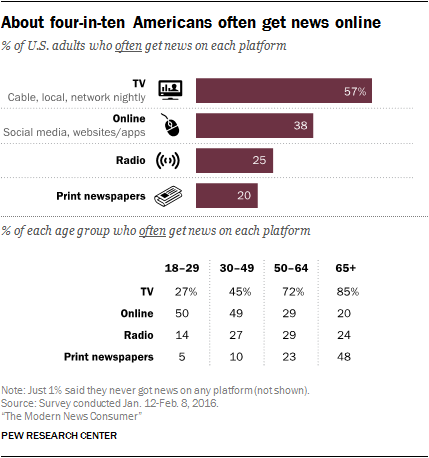How Online News can Save You Time, Stress, and Money.
How Online News can Save You Time, Stress, and Money.
Blog Article
Facts About Online News Revealed
Table of ContentsThe Greatest Guide To Online News8 Simple Techniques For Online NewsThe Single Strategy To Use For Online NewsOnline News Things To Know Before You Get This
Get information regarding the benefits of our programs, the programs you'll take, and what you require to apply.The future of journalism will increasingly depend upon consumers paying for the news straight, as content representatives like Facebook and Google use up the lion's share of electronic marketing bucks. The Media Insight Task, a partnership of the American Press Institute and The Associated Press-NORC Facility for Public Affairs Study, has undertaken what our company believe is among the biggest efforts ever before to recognize who registers for information, what encourages them, and how designers of journalism can engage much more deeply with customers so even more people will certainly subscribe.
The study discovers that a little over half of all united state grownups subscribe to information in some formand about half of those to a newspaper. And contrary to the concept that youths will certainly not spend for news since details online is totally free, virtually 4 in 10 adults under age 35 are paying for information.
There is additionally substantial evidence that more customers could begin to pay for news in the futureif authors can recognize them and serve them well. Half of those that do not spend for information proactively look for out information and resemble customers in different methods. And virtually 2 in 10 of those that do not register for information currently suggest they are inclined to start to pay in the future.
4 Easy Facts About Online News Shown
Amongst them: That pays for news? Why do they pay? That does not spend for information and why not? What are the paths publishers can require to extra deeply involve viewers and to persuade information customers to pay for journalism directly? What rate points issue? The solutions may shape what journalism resembles in the future - Online News.
We then ask a collection of concerns to identify whether people spend for particular kinds of news resources. We asked people to call the sources they use most oftenwhether they spend for them or nothow they use them, the specific points they consider important regarding them, and some related questions regarding the price and value of that source.
This number does not include those that spend for cable television bundles that could include news channels. Totally 37 percent of the youngest adults, 18 to 34 years of ages, sign up for information. Both youngest age accomplices that pay (18-34 and 35-49) likewise act in a different way than older clients. They are inspired extra by a wish to support the wire service's mission.
Individuals are drawn to information in general for two factors over others: A desire to be notified residents (paper subscribers in specific are very motivated by this) and since the magazine they sign up for excels at covering particular topics regarding which those customers specifically care. While there are a host of reasons, the No.
What Does Online News Do?
Even more than 4 in 10 additionally point out the fact that good friends and family members register for the very same item. Even more than a 3rd of individuals say they originally subscribed in response to a discount or promo. In print, individuals additionally are relocated greatly to register for obtain promo codes that conserve them cash, something that has untapped ramifications in digital.

We asked everybody that told us they have a regular totally free source of news how likely they would certainly be to spend for it. Even more than a quarter (26 percent) say they would go to the very least rather likely to begin paying for itand 10 percent are extremely or incredibly likely. These likely payers often tend to be information candidates, and they likewise have a tendency to be individuals who already spend for an information registration in addition to the source they follow absolutely free.
Of those that do pay, 54 percent subscribe to papers in print or electronically, which represents 29 percent of Americans on the whole. The majority of them acquire a print publication together with their newspaper and spend Click This Link for two to 4 information sources in total amount, some a lot more. And while 53 percent are long-time subscribers (5+ years), more than a quarter (27 percent) have actually bought their paper membership within the past year.
Online News for Beginners
Few print subscribers believe it most likely they will change to a digital-only subscription in the future, and even more than half of those that favor digital have actually never ever paid for a print version of the very same resource. Fully 75 percent of newspaper payers claim they mainly checked out the paper in print, while 21 percent are mostly digital individuals, and 4 percent explain themselves as equally split.

Just 1 in 10 people think their registration costs too much of what they get. Digital customers in certain are most likely than print clients to feel they are useful source obtaining an excellent value (48 percent vs. 32 percent), suggesting they could be a lot more happy to pay greater than they are currently.
Right now, the Coronavirus pandemic is requiring worldwide experimentation with remote training. There are numerous indications that this dilemma is going to transform lots of aspects of life. Education and learning could be among them if remote teaching verifies to be a success. No question, the change to on the internet understanding because of COVID-19 was abrupt and hasty.
Report this page